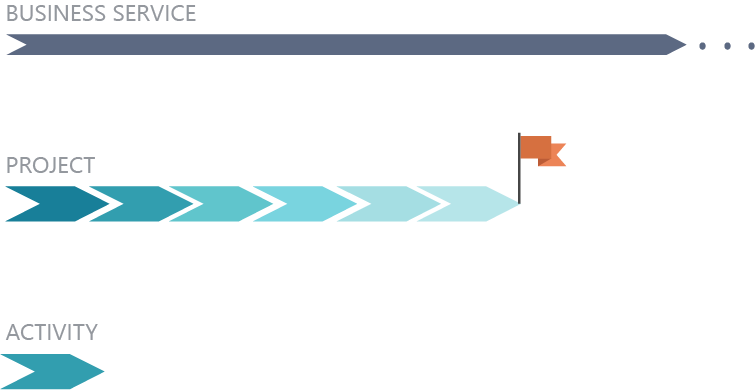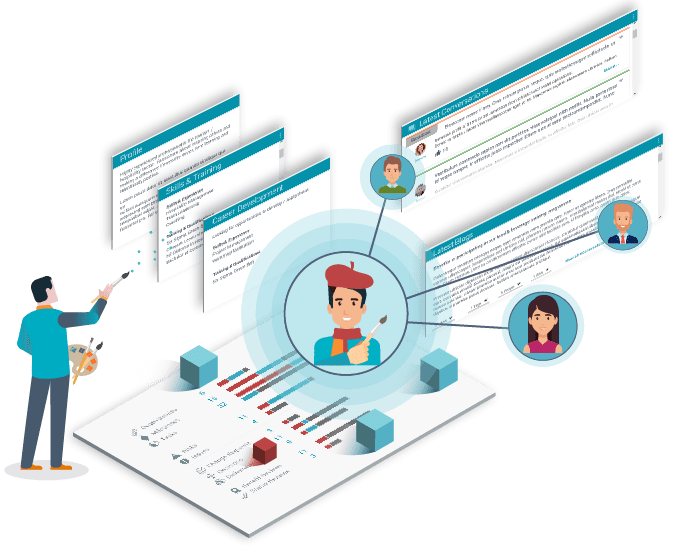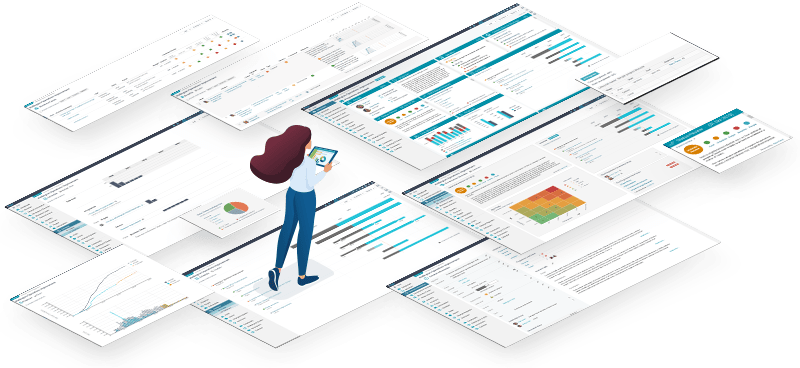Key Features of Activities, Business Services & Projects
- Socialise the concept of managing different types of work using consistent approaches and toolsets.
- Reinforce the value to the organization of Activities, Business Services and Projects.
- Reinforce the importance of aligning change projects to Business Services (BAU).
- Reinforce the need to see complete workloads to provide the right level of guidance, support and allocation management to your people.
Don't just stop at Projects

People just don't work on projects. They will also be working on, and committing time to, a range of other, non-project related Activities. Think of these as very small projects, often delivered by one person, with a start, finish and outcome.
Another work vehicle is Business Services which are long-term pieces of work. You could think of these as open-ended, multi-year projects.
All of these different initiatives must be managed in the one place, and be visible, to ensure an accurate view of work demands, work allocation, availability and suitability of your people.
Activities absorb time
Activities have the same functionality as the Task part of a project. This includes scheduling, allocation, action items, and Custom Fields. Activities can also be reviewed, and their costs tracked.
Activities, as with all other action items, will appear on a person's Workspace so can be managed and updated from there.
They will also appear in a range of management reports and screens, including resource planning.
Business Services
‘keep the lights on’
Business Services are long-term pieces of Business-As-Usual, Core work that are critical for the overall functioning and service delivery of the business.
They tend to have multiple people assigned by set weekly ‘allocation rates’.
These could include services that are delivered as a regular thing, such as batch processing, or monthly payment transactions.
Most business groups will have Business Services as part of their portfolios of work.
Projects are new, change initiatives
A project is a logical grouping of interdependent or related deliverables focused on achieving business strategies / customer expectations. Projects are the change vehicles for many organizations and are critical to business success and growth. Projects will differ in terms of size, complexity, value to the business, and management requirements. The tools you choose to use will depend on all these factors.
Each project has:
- a single business / project owner - accountable for the business outcome and ultimately the success of the project;
- a single, appropriately skilled project manager - accountable for delivery of the product(s);
- a clear business related outcome;
- the potential to cross-over a range of sub-projects;
- been identified and authorised through the appropriate approval processes.
The full toolkit includes:
- Alignment to Strategies
- Escalation
- Conversations
- #tags
- Status Reviews
- Template generation
- Change Requests
- KanBan Board
- Reports
- Portal
- Registers
- Events
- Meetings
- Documents
- Baselines
- Lifecycles
- Prioritization
Work across Activities, Business Services & Projects
The key to the successful management of Activities, Business Services and Projects is leveraging their differences and similarities. Although they are different work types set up for different reasons, as far as possible, the user interface should look similar.
All require some form of task management and that should be consistent in terms of user interface and functionality across each work type.
If a person is assigned to any, or all, of these work types then the work requirement will appear in their Personal Workspace. It can then be updated from their Workspace, and this will synchronise with the parent initiative.
Workload allocations that take into account multiple work-types are then available to planners looking at current and future workloads, and the likely availability of suitable people.





